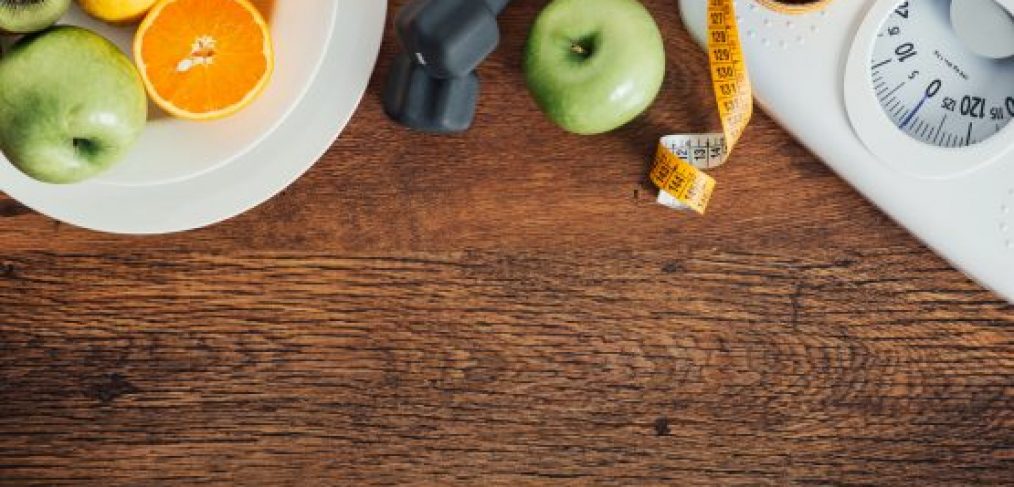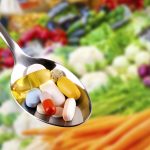9 % + 80 % ?

It may not add up to 100, but if you know what the context is, it adds up in another way.
The numbers refer to my body fat percentage and the percent of calories I eat that come from fat.
Last week, I visited a local facility, BodySpec, to have my body fat measured with a DEXA scan.
(Interesting to note how much technology has changed since I was in college and we regarded the hydrostatic tank as the gold standard!)
I’m using myself, as always, as a guinea pig or an example to demonstrate something I’ve been wholeheartedly experiencing on my own over the past two years and writing about accordingly:
Eating fat does not make one fat.
And no, training for marathons or ironman is not the main reason I’m lean; it’s because of what I’m eating.
Recall a picture I shared of me when I was in the throes of GI distress, training far more than I am now (back then it was loads of mileage, mileage and more mileage, 25 – 30 hours per week of it), eating the recommended 70% of calories coming from carbohydrate to support a ‘healthy athlete’s approach to diet’ and feeling, quite frankly, just miserable all the time.
I didn’t dare get in a tank or do a DEXA scan back then, for the sheer frustration of where it might have registered me.
Granted, I wasn’t terribly overweight, but given the amount of time I was spending training and attention I was putting on what I was eating, it was just annoying to not appear lean and fit.
About two years ago, I began my foray into a fat-adaptation protocol, initially for racing, but eventually, for its simplicity to follow day in and day out and for the health benefits we as humans can glean from it.
And, being that I’m becoming more and more of someone to geek out with numbers, I asked my doctor to retest me only 6 weeks after my annual women’s health exam, back in 2015.
Notice how my trigs went from 139 to 60 in 6 weeks, while my HDL rose from 79 to 95, when I more or less cut out fruit completely and shifted those macronutrients to favor fat.
March 5, 2015
• Chol 178
• Hdl 79
• Trig 139
• Ldl 79
• Vldl 28
April 17, 2015
• Chol 190
• Hdl 95
• Ldl 83
• Vldl 12
• Trig 60
Total cholesterol went up 12 points, but remember, it’s not the total number to be uber concerned with. And another thing- we need cholesterol, just as we need fat, including saturated fat!
(By the way, when I was vegan for two years, I was 20 pounds heavier and with my cholesterol barely hovering over 100, I wasn’t getting my period! Another example that we need cholesterol as a fundamental part of the hormonal cascade!)
With references from the Mayo Clinic and WebMD, respectively, you can see how the numbers don’t lie and by adding fat from all sources (not just more olive oil, more avocado and more coconut oil; we’re talking about pasture-fed lard and rendered duck fat. By the way, it doesn’t get much tastier than that! )
For reference, the chart below from the Mayo Clinic shows what we look for in terms of trigs:
Normal — Less than 150 milligrams per deciliter (mg/dL), or less than 1.7 millimoles per liter (mmol/L)
Borderline high — 150 to 199 mg/dL (1.8 to 2.2 mmol/L)
High — 200 to 499 mg/dL (2.3 to 5.6 mmol/L)
Very high — 500 mg/dL or above (5.7 mmol/L or above)
Switching my macros was only the beginning.
With my history of being ill for so long, which is what led me to gluten-free, then Paleo in the first place, and the recognition that I was able to continually tweak what I was eating to see what the next level of feeling fantastic might be, I decided to become more and more open minded about what I’d test.
Now, if you’ve been reading my blog for a while, you’ll already know that I’m broadening my approach in order to reach more people, come across as less dogmatic and to move out of an area which has become too confusing and trendy for many to appreciate.
Once I began to experience the benefits of fat adaptation, I was led to revisit the concept of reintroducing one type of fat I’d put on the back burner for a long time, because it wasn’t part of a text-book paleo approach: butter or ghee from a grass fed cow.
I’d been using MCT for a few years and the more I listened to the wealth of information that Dave Asprey brings to the table (if you haven’t listened to him; it’s a must-do- this guy is brilliant!), the more I was intrigued to see how I’d feel if I took my eating regime to the next level.
Currently, I’m toying with more and more intermittent fasting, using myself, once again, as my own subject (as well as my husband, who fills the role of athlete / busy executive who travels all the time ) and, just as when I was new to Paleo, back in the early 2000s, it’s fitting really well.
My marathon prep is going better than I ever could have hoped, thanks to the improved focus I feel without having sugar ups and downs (yes, I was feeling those just from fruit and the yams I’d often have when preparing for a tough workout the next day), the absence of muscle soreness (since training fasted, and therefore using fat as my fuel is a far cleaner burning fuel), the increased energy I feel all day long and the improved quality of sleep.
Oh, and by the way, when you’re eating less, you’re also saving dollars on buying less food.
One thing I must mention, and this is with a huge emphasis and a double underline: this is not, not, not starving or a cleanse or an eating disorder (sadly, I’ve been asked about all three; given all the misinformation out there, I suppose this isn’t surprising).
This is 100% about being so satiated that you’re just not preoccupied with when you’re going to eat next.
It’s keeping hydrated, moving your body in some capacity and then when your body tells you it’s time to eat, guess what?
You eat!
What do you eat?
A typical day for me would be coffee / MCT oil and sometimes now- ghee – other times raw cultured butter from the farmer’s market or good old coconut oil- blended in the morning after a glass or two of lemon water, about 1/2 hour prior to training.
Then- run (or swim or yoga or hike – whatever that day might include- with the common theme being that it’s fun!)
Water. Sometimes bone broth as recovery- nice and salty!
Sometimes hot, sometimes cold- depending on the weather.
When I get hungry?
Veggies. Lots of them and mostly leafy greens. Sometimes sautéed, sometimes roasted, sometimes raw, sometimes steamed. Protein- moderate in portion, mindfully sourced and in balance- sometimes raw wild salmon, sometimes rare grass-fed rib-eye, sometimes pasture-fed porchetta. And fat! Lovely, incredible, amazing fat- pasture-fed lard, rendered duck fat, tallow, coconut oil, avocado, olive oil… or a mixture. How much? More than you think (not a teaspoon).
I’m not going to list out quantities because your body will guide you.
Sit down with your meal.
Don’t multi task.
Enjoy it.
Experience nourishing your body and consequently, your mind.
Keep hydrated.
Then, several hours later, when you feel a rumbling in your stomach and glance at your watch and notice it’s been hours since your last meal, have another of a similar composition to what you had before.
For me, it wasn’t as though I was feeling badly; rather, it was a desire to see what else I might entertain to feel even better than I was feeling before.
If you’re trying this and you’re feeling hungry, make sure you’re eating enough. Again- this is not a suggestion to starve, deprive or diet.
It’s a suggestion to go back to basics, to eat what we are humans are meant to be eating.
Call it farm to table (eat the whole animal, remember?), local / sustainable and organic…at the end of the day, if it grew near where you live or ran on the land or swam in the water close to the place you call home, it’s food.
If it’s in a package, can or box, despite being labeled natural / healthy / lite / fresh, the chances of it being even close to a nutritionally dense food are slim.
Last thing: yes, there are times and places when we do need to eat something that isn’t as fresh as a kale salad from your own backyard with a piece of wild black cod you caught on your own boat.
This is where balance comes in once again.
Think big picture, choose the best option you can, given the situation you find yourself in, and stay on your fat-burning path with your bad self!





